Balkinization
an unanticipated consequence of
Jack M. Balkin
Balkinization Symposiums: A Continuing List
E-mail:
Jack Balkin:
jackbalkin at yahoo.com
Bruce Ackerman
bruce.ackerman at yale.edu
Ian Ayres
ian.ayres at yale.edu
Corey Brettschneider
corey_brettschneider at brown.edu
Mary Dudziak
mary.l.dudziak at emory.edu
Joey Fishkin
joey.fishkin at gmail.com
Heather Gerken heather.gerken at yale.edu
Abbe Gluck abbe.gluck at yale.edu
Mark Graber
mgraber at law.umaryland.edu
Stephen Griffin
sgriffin at tulane.edu
Jonathan Hafetz
jonathan.hafetz at shu.edu
Jeremy Kessler
jkessler at law.columbia.edu
Andrew Koppelman
akoppelman at law.northwestern.edu
Marty Lederman
msl46 at law.georgetown.edu
Sanford Levinson
slevinson at law.utexas.edu
David Luban
david.luban at gmail.com
Gerard Magliocca
gmaglioc at iupui.edu
Jason Mazzone
mazzonej at illinois.edu
Linda McClain
lmcclain at bu.edu
John Mikhail
mikhail at law.georgetown.edu
Frank Pasquale
pasquale.frank at gmail.com
Nate Persily
npersily at gmail.com
Michael Stokes Paulsen
michaelstokespaulsen at gmail.com
Deborah Pearlstein
dpearlst at yu.edu
Rick Pildes
rick.pildes at nyu.edu
David Pozen
dpozen at law.columbia.edu
Richard Primus
raprimus at umich.edu
K. Sabeel Rahmansabeel.rahman at brooklaw.edu
Alice Ristroph
alice.ristroph at shu.edu
Neil Siegel
siegel at law.duke.edu
David Super
david.super at law.georgetown.edu
Brian Tamanaha
btamanaha at wulaw.wustl.edu
Nelson Tebbe
nelson.tebbe at brooklaw.edu
Mark Tushnet
mtushnet at law.harvard.edu
Adam Winkler
winkler at ucla.edu
Compendium of posts on Hobby Lobby and related cases
The Anti-Torture Memos: Balkinization Posts on Torture, Interrogation, Detention, War Powers, and OLC
The Anti-Torture Memos (arranged by topic)
Recent Posts
The Future of News, Part One-- The Problem
Just A Few Blogs
ACS Blog
Alas, a Blog
Althouse
Arts and Letters Daily
Atrios (Eschaton)
Bill of Health
Buzzflash.com
Buzz Machine
Cato at Liberty
Juan Cole (Informed Comment)
Concurring Opinions
The Constitution in 2020
Corrente
Crooked Timber
Daily Howler
Daily Kos
Dana Boyd
Brad DeLong
Digby (Hullabaloo)
Discriminations
Daniel Drezner
Kevin Drum (Mother Jones)
Electrolite
En Banc
Eunomia (Daniel Larison)
Fafblog
Michael Froomkin (Discourse.net)
GovLab (Beth Noveck)
Rick Hasen (Election Law)
History News Network
How Appealing
Ignatz (Sam Heldman)
The Importance of (Ernie Miller)
Infolaw
Instapundit
International Economic Law and Policy Blog
IntLawGrrls
Jacob Levy
Jesus' General
Jurisdynamics
The Kitchen Cabinet
Mark Kleiman
Law Blog Central
Larry Lessig
Lawyers, Guns and Money
Liberal Oasis
Brian Leiter's Law School Reports
The Leiter Reports
Marginal Revolution
Megan McArdle
Memeorandum
Metafilter
Mirror of Justice
The New Republic
Newseum
No More Mister Nice Blog
Brendan Nyhan
Opinio Juris
Orcinus
The Originalism Blog
Pandagon
Passport (Foreign Policy)
Overcoming Bias
Political Animal (Washington Monthly)
Political Theory Daily Review
Political Wire (Taegan Goddard)
The Poor Man
Virginia Postrel
Prawfsblawg
Public Reason
Jonathan Rauch
Raw Story
Redstate
ReligiousLeftLaw.com
Reporters Committee For Freedom of the Press
Reproductive Rights Blog
Rothman's Roadmap to the Right of Publicity
SCOTUS Blog
Seeing the Forest
Clay Shirky
The Shifted Librarian
The Situationist
Larry Solum (Legal Theory)
Andrew Sullivan
Talking Points Memo
Talk Left
Tapped
Tbogg
TechPresident
The Paper Chase (Jurist)
Tom Paine
Tom Tomorrow (This Modern World)
Eve Tushnet
Uggabugga
University of Chicago Law School Faculty Blog
Unqualified Offerings
The Volokh Conspiracy
War and Piece (Laura Rozen)
Wampum
Oliver Willis
Wonkette
Written Description
Matthew Yglesias
Yin
Your Choice of Feeds
1. XML
powered by
2. Atom Feed
3. RSS 2.0
The Future of News, Part One-- The Problem
Guest Blogger
C. Edwin Baker
University of Pennsylvania
Massive layoffs of journalists at most newspapers, continuing and increasing circulation declines, sharp losses of advertising revenue, bankruptcies and closures create a foreboding spiral in the news industry. The future of professionally produced news hangs in the balance with no remedy in sight. Of these five problems, however, I put aside highly publicized bankruptcies, mostly caused not by lack of operating profits but by excessive debt generated by shortsighted recent purchases. And I put aside closures, like those threatened by the Seattle P-I and the Rocky Mountain News, which reflect the twentieth century’s experience that competing dailies in two newspaper towns are seldom economically sustainable.
Most troubling is the loss of journalists on which news production depends. The San Jose Mercury has lost over half its journalists over the last decade. By last summer, the Philadelphia Inquirer, the Dallas Morning News, the Minneapolis Star Tribune had seen newsroom cuts of 30% to 50%. Further layoffs are continuing at most major papers. What should be made of this? Does it represent merely a historical transformation to a new cultural order? Is bemoaning the loss simply conservative romanticism for an inevitably by-gone era – nostalgia intensified by justified concern for all those who have devoted their career to a once glorious profession? Or, is the lay-off of journalists a real crisis for democracy, different in kind than, say, the passing of livery stables, the decline of the family farm, or lay-offs in the troubled, oil-dependent airline industry? And if a crisis for democracy, can anything be done?
Withering of public interest in news not the problem
Common wisdom blames the crisis in newspapers on a loss of people’s, especially young people’s, interest in news. This explanation is not only simply too easy. It is wrong. True, new online diversions combined with the pace of modern life – who has the time to sit and read a newspaper? – might explain some reduction in news consumption, but the evidence here is very weak. Two points must be made about the noted recent – and increasing – decline in newspaper circulation.
First, much of the decline of newspaper circulation relates not to fewer newspaper readers but to how those readers access newspaper journalism. The Newspaper Association of America reports that paid daily circulation staying at its high plateau of roughly 62 million between 1968 to 1990 period, but dropping off at an increasing rate to about 52 million in 2006. Over the last fifteen years, however, online readership has grown from basically zero to 63.2 million people (39% of active web users), who spent an average of 44 minutes on newspaper web sites in October 2007. Thus, the ten million loss in print circulation appears is largely replaced by sixty three million online readers. Moreover, even when people go to non-newspaper online sources of news, these sources have often derived, if not simply copied, their information from newspaper’s journalism. Evidence of a decreasing public reliance on newspapers as either the initial or ultimate journalistic source of news is way overblown.
Second, circulation declines are the predictable result of selling a degraded product – one produced by less journalists – or the same product at a higher price or, often, a degraded product at a higher price. (In addition, some circulation declines have been engineered. Since newspapers have long received the bulk of their revenue from advertisers, paying more for ink, paper, and delivery than the paper receives from readers, papers have increasingly chosen to shed circulation from parts of town or outlying regions of the state where readers are not likely to be customers of, and hence are not valued by, local advertisers.) Despite public hand-wringing, publishers know how to maintain or increase their audience – if they want to. Recent years have seen some papers gain circulation when they avoid either raising their cover price or reducing their newsroom budget. Clearly, papers that have and keep more than average number of journalists (per 1000 readers) are likely to avoid or limit declines and maybe even increase circulation.
The trouble is that keeping or expanding circulation costs more than the revenue it produces. Often papers accurately calculate that profits increase more if it spends less on journalists (or raises the cover price) even if this causes circulation losses. To maintain or expand circulation by hiring journalists to improve its product is simply more expensive than it is worth in bottom line results.
Financial base and advertising support as the problem.
Advertising has always been a problematic partner in the provision of news. Its increasing financial role since the late nineteenth century created the financial rationale for objectivity to replace partisanship and to become the ruling norm in journalism. Objectivity, even though less valued and hence requiring a price reduction, allowed selling a less differentiated product to a broader audience, which produced more than compensating advertising revenue. The greater uniformity then became central to the collapse of competition of multiple daily newspapers within a town. These changes suppressed political participation, a suppression skewed against portions of the public not valued by advertisers. Advertisers subsequently caused not only overt violations of the newspaper’s line dividing church and state, but also creation of advertising friendly copy and self-censorship, often unconscious, in the story lines pursued. And, of course, as the central cultural institution of capitalism, advertising likely contributes to American’s over-valuation of privately owned goods and inadequate taxpayer support for expenditures on public goods – goods seldom promoted by advertisers.
Nevertheless, advertising has provided the economic foundation of American journalism. The current crisis in the news industry is much less diversion of readers to online non-traditional media sources or abandonment of people’s interest in news than to the decreased value of readers to newspapers due to the diversion of advertising from support of journalism to support of non-news online activities. Newspapers have not been able, at least not yet, to squeeze near the advertising revenue from an online reader than from a print reader. People’s reduced reliance on newspaper advertising is also significant – as illustrated by huge losses of highly profitable classified ads to online services. Even if a newspaper company rather than, say, E-bay or Craig’s List owned and profited from the online listing service, the newspaper company has no economic incentive to plow that money back into their news product, into journalism.
Possibly most serious, advertising is a more or less fixed pot. Huge portions of advertising revenue now supports the suppliers of the “search” for all sorts of already-produced information (including product and personal information) rather than journalistic entities which produce news – which is the story of huge capitalization of Google. Internet advertising that basically did not exist thirteen years ago clocked in at $21.2 billion in 2007 – with 41% going to advertising related to “searches” – and the amount is rising rapidly. That compares with annual newspaper advertising of roughly $40 billion, an amount in decline due primarily to this increasing diversion to online advertising. Though advertising always goes down even in minor recessions, even more so in anything like what the country is currently experiencing, the movement to online advertising is of historic significance for the news industry. Essentially the advertising that has long paid for journalism is in irreversible decline. Without a solution, the future may simply provide an inadequate financial basis for support of the journalism profession and for the news a democratic society needs.
Significance of problem.
Economic theory clearly predicts that free markets will not alone produce as much quality news content as the public – as consumers – want. Using willingness to pay as a criterion of what people want, the market would achieve this result if, but only if, producers of news content can receive payment for all the benefits it produces, payments from all those who benefit, these payments being the proper incentives for production.
Certainly circulation levels and corresponding revenue reflect some of the benefits received by individual readers. These readers pay (or spend time then sold to advertisers) for being better informed, more amused, or otherwise fulfilled from receiving the paper. But when a journalistic unit exposes corruption that leads to reform, non-readers benefit just as much from the reform and hence from the news production as do the readers. When reporting portrayal of problems leads to government (or corporate or charitable) responses, all those suffering from the problems the paper identifies, not just its readers, benefit. When a quality journalistic unit’s reputation for casting light on misdeeds deters corruption and keeps those in power on their toes, once again the broader public benefits even though this deterrence means that the paper has no story to sell to its readers. Though people disagree about which political candidates are best, most agree that they and everyone else benefit when not only their own but other people’s vote is well informed. But a person can receive this benefit of quality newspapers informing other peoples’ votes without herself reading or paying. And she benefits more the better job the paper does – a job highly dependent on the resources the paper has. That is, I benefit greatly and in multiple ways from quality public radio news or solid investigative journalism of my local paper even if I do not listen or read – or pay!
All these potential benefits to people for which many pay nothing and for which no one pays fully results in the paper (or broadcaster) having inadequate incentives to produce the quality or amount of news that would provide the benefits at the level they are valued. Of course, the news entity does produce some journalism – its direct audience will pay something and advertisers add payments for access to this audience. This amount is, however, far, far less than the benefits that more and better journalism could generate at a cost less than the benefits it would provide. And the converse of these arguments applies to poor quality news – it creates uninformed, less informed or misinformed audiences to the detriment of the public as a whole.
To be sure, poor quality, misleading, or glaring absences of coverage can occur despite fully adequate newsroom budgets, just as bad judgments are sometimes made by the best physicians using the best medical tests and equipment. Nevertheless, the correct expectation is that more resources will improve quality. Any good editor will say, usually rightly, that she could provide better quality news if she is given more resources – more experienced reporters, bigger newsroom budgets.
[In Part Two tomorrow, Professor Baker will offer some possible solutions]
Posted
6:35 AM
by Guest Blogger [link]
Books by Balkinization Bloggers

Gerard N. Magliocca, The Actual Art of Governing: Justice Robert H. Jackson's Concurring Opinion in the Steel Seizure Case (Oxford University Press, 2025)

Linda C. McClain and Aziza Ahmed, The Routledge Companion to Gender and COVID-19 (Routledge, 2024)

David Pozen, The Constitution of the War on Drugs (Oxford University Press, 2024)

Jack M. Balkin, Memory and Authority: The Uses of History in Constitutional Interpretation (Yale University Press, 2024)
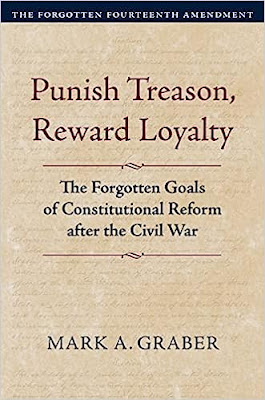
Mark A. Graber, Punish Treason, Reward Loyalty: The Forgotten Goals of Constitutional Reform after the Civil War (University of Kansas Press, 2023)
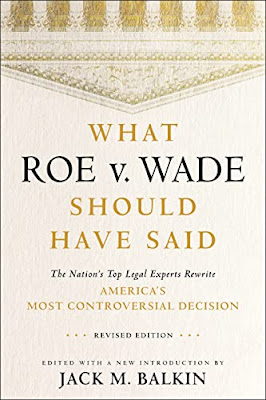
Jack M. Balkin, What Roe v. Wade Should Have Said: The Nation's Top Legal Experts Rewrite America's Most Controversial Decision - Revised Edition (NYU Press, 2023)

Andrew Koppelman, Burning Down the House: How Libertarian Philosophy Was Corrupted by Delusion and Greed (St. Martin’s Press, 2022)

Gerard N. Magliocca, Washington's Heir: The Life of Justice Bushrod Washington (Oxford University Press, 2022)
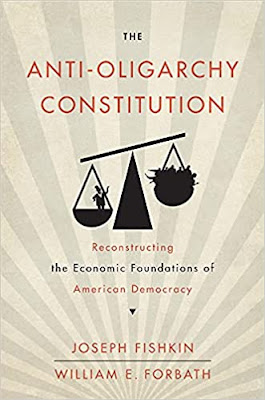
Joseph Fishkin and William E. Forbath, The Anti-Oligarchy Constitution: Reconstructing the Economic Foundations of American Democracy (Harvard University Press, 2022)
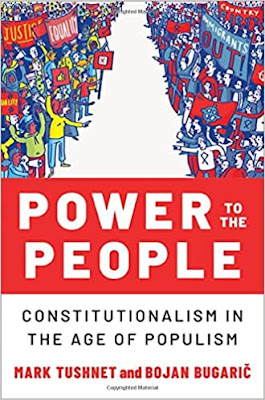
Mark Tushnet and Bojan Bugaric, Power to the People: Constitutionalism in the Age of Populism (Oxford University Press 2021).

Mark Philip Bradley and Mary L. Dudziak, eds., Making the Forever War: Marilyn B. Young on the Culture and Politics of American Militarism Culture and Politics in the Cold War and Beyond (University of Massachusetts Press, 2021).

Jack M. Balkin, What Obergefell v. Hodges Should Have Said: The Nation's Top Legal Experts Rewrite America's Same-Sex Marriage Decision (Yale University Press, 2020)

Frank Pasquale, New Laws of Robotics: Defending Human Expertise in the Age of AI (Belknap Press, 2020)

Jack M. Balkin, The Cycles of Constitutional Time (Oxford University Press, 2020)

Mark Tushnet, Taking Back the Constitution: Activist Judges and the Next Age of American Law (Yale University Press 2020).

Andrew Koppelman, Gay Rights vs. Religious Liberty?: The Unnecessary Conflict (Oxford University Press, 2020)

Ezekiel J Emanuel and Abbe R. Gluck, The Trillion Dollar Revolution: How the Affordable Care Act Transformed Politics, Law, and Health Care in America (PublicAffairs, 2020)

Linda C. McClain, Who's the Bigot?: Learning from Conflicts over Marriage and Civil Rights Law (Oxford University Press, 2020)
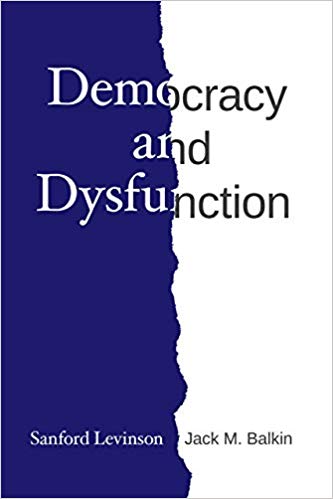
Sanford Levinson and Jack M. Balkin, Democracy and Dysfunction (University of Chicago Press, 2019)

Sanford Levinson, Written in Stone: Public Monuments in Changing Societies (Duke University Press 2018)

Mark A. Graber, Sanford Levinson, and Mark Tushnet, eds., Constitutional Democracy in Crisis? (Oxford University Press 2018)

Gerard Magliocca, The Heart of the Constitution: How the Bill of Rights became the Bill of Rights (Oxford University Press, 2018)

Cynthia Levinson and Sanford Levinson, Fault Lines in the Constitution: The Framers, Their Fights, and the Flaws that Affect Us Today (Peachtree Publishers, 2017)

Brian Z. Tamanaha, A Realistic Theory of Law (Cambridge University Press 2017)

Sanford Levinson, Nullification and Secession in Modern Constitutional Thought (University Press of Kansas 2016)

Sanford Levinson, An Argument Open to All: Reading The Federalist in the 21st Century (Yale University Press 2015)

Stephen M. Griffin, Broken Trust: Dysfunctional Government and Constitutional Reform (University Press of Kansas, 2015)

Frank Pasquale, The Black Box Society: The Secret Algorithms That Control Money and Information (Harvard University Press, 2015)

Bruce Ackerman, We the People, Volume 3: The Civil Rights Revolution (Harvard University Press, 2014)
Balkinization Symposium on We the People, Volume 3: The Civil Rights Revolution

Joseph Fishkin, Bottlenecks: A New Theory of Equal Opportunity (Oxford University Press, 2014)

Mark A. Graber, A New Introduction to American Constitutionalism (Oxford University Press, 2013)

John Mikhail, Elements of Moral Cognition: Rawls' Linguistic Analogy and the Cognitive Science of Moral and Legal Judgment (Cambridge University Press, 2013)

Gerard N. Magliocca, American Founding Son: John Bingham and the Invention of the Fourteenth Amendment (New York University Press, 2013)

Stephen M. Griffin, Long Wars and the Constitution (Harvard University Press, 2013)

Andrew Koppelman, The Tough Luck Constitution and the Assault on Health Care Reform (Oxford University Press, 2013)

James E. Fleming and Linda C. McClain, Ordered Liberty: Rights, Responsibilities, and Virtues (Harvard University Press, 2013)
Balkinization Symposium on Ordered Liberty: Rights, Responsibilities, and Virtues

Andrew Koppelman, Defending American Religious Neutrality (Harvard University Press, 2013)

Brian Z. Tamanaha, Failing Law Schools (University of Chicago Press, 2012)

Sanford Levinson, Framed: America's 51 Constitutions and the Crisis of Governance (Oxford University Press, 2012)

Linda C. McClain and Joanna L. Grossman, Gender Equality: Dimensions of Women's Equal Citizenship (Cambridge University Press, 2012)

Mary Dudziak, War Time: An Idea, Its History, Its Consequences (Oxford University Press, 2012)

Jack M. Balkin, Living Originalism (Harvard University Press, 2011)

Jason Mazzone, Copyfraud and Other Abuses of Intellectual Property Law (Stanford University Press, 2011)

Richard W. Garnett and Andrew Koppelman, First Amendment Stories, (Foundation Press 2011)

Jack M. Balkin, Constitutional Redemption: Political Faith in an Unjust World (Harvard University Press, 2011)

Gerard Magliocca, The Tragedy of William Jennings Bryan: Constitutional Law and the Politics of Backlash (Yale University Press, 2011)

Bernard Harcourt, The Illusion of Free Markets: Punishment and the Myth of Natural Order (Harvard University Press, 2010)

Bruce Ackerman, The Decline and Fall of the American Republic (Harvard University Press, 2010)
Balkinization Symposium on The Decline and Fall of the American Republic

Ian Ayres. Carrots and Sticks: Unlock the Power of Incentives to Get Things Done (Bantam Books, 2010)

Mark Tushnet, Why the Constitution Matters (Yale University Press 2010)
Ian Ayres and Barry Nalebuff: Lifecycle Investing: A New, Safe, and Audacious Way to Improve the Performance of Your Retirement Portfolio (Basic Books, 2010)
.jpg)
Jack M. Balkin, The Laws of Change: I Ching and the Philosophy of Life (2d Edition, Sybil Creek Press 2009)

Brian Z. Tamanaha, Beyond the Formalist-Realist Divide: The Role of Politics in Judging (Princeton University Press 2009)
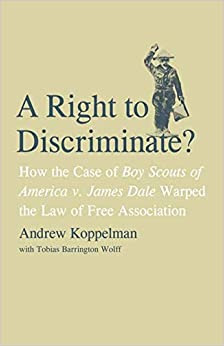
Andrew Koppelman and Tobias Barrington Wolff, A Right to Discriminate?: How the Case of Boy Scouts of America v. James Dale Warped the Law of Free Association (Yale University Press 2009)

Jack M. Balkin and Reva B. Siegel, The Constitution in 2020 (Oxford University Press 2009)
Heather K. Gerken, The Democracy Index: Why Our Election System Is Failing and How to Fix It (Princeton University Press 2009)

Mary Dudziak, Exporting American Dreams: Thurgood Marshall's African Journey (Oxford University Press 2008)

David Luban, Legal Ethics and Human Dignity (Cambridge Univ. Press 2007)

Ian Ayres, Super Crunchers: Why Thinking-By-Numbers is the New Way to be Smart (Bantam 2007)

Jack M. Balkin, James Grimmelmann, Eddan Katz, Nimrod Kozlovski, Shlomit Wagman and Tal Zarsky, eds., Cybercrime: Digital Cops in a Networked Environment (N.Y.U. Press 2007)
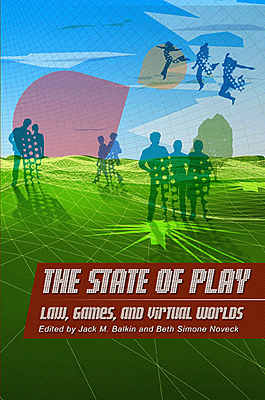
Jack M. Balkin and Beth Simone Noveck, The State of Play: Law, Games, and Virtual Worlds (N.Y.U. Press 2006)

Andrew Koppelman, Same Sex, Different States: When Same-Sex Marriages Cross State Lines (Yale University Press 2006)
Brian Tamanaha, Law as a Means to an End (Cambridge University Press 2006)
Sanford Levinson, Our Undemocratic Constitution (Oxford University Press 2006)
Mark Graber, Dred Scott and the Problem of Constitutional Evil (Cambridge University Press 2006)
Jack M. Balkin, ed., What Roe v. Wade Should Have Said (N.Y.U. Press 2005)
Sanford Levinson, ed., Torture: A Collection (Oxford University Press 2004)
Balkin.com homepage
Bibliography
Conlaw.net
Cultural Software
Writings
Opeds
The Information Society Project
BrownvBoard.com
Useful Links
Syllabi and Exams